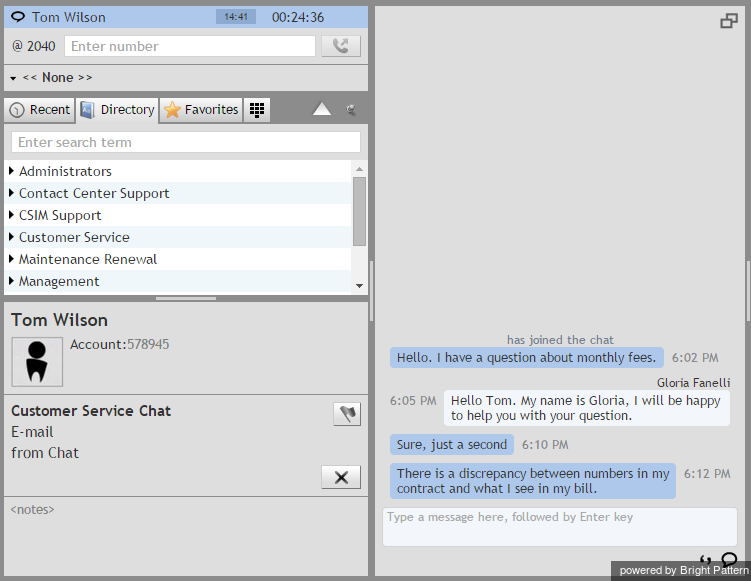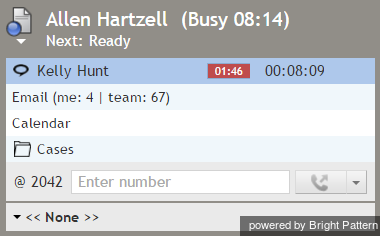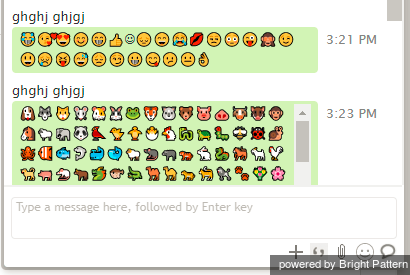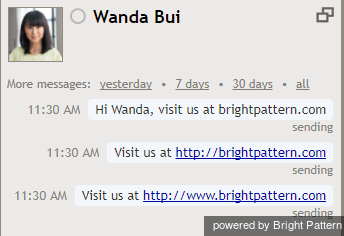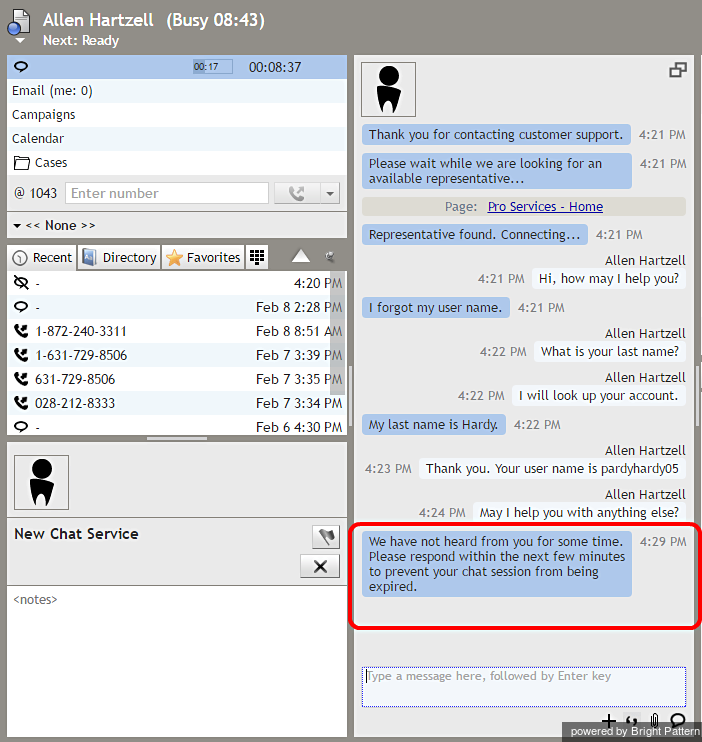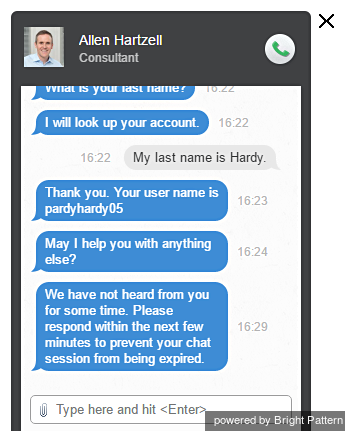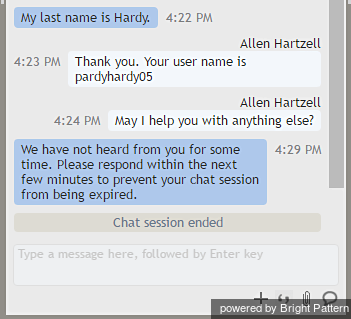Contents
- Introduction
- Starting Your Working Session
- Starting Agent Desktop
- Selecting a Phone Device
- Logging into Agent Desktop
- Installing and Updating the Agent Desktop Helper Application
- User Interface Overview
- Changing Your Agent Desktop Appearance
- Understanding Screen-pop
- Configuring Your User Profile
- Configuring Your Voicemail
- Listening to Voicemail Messages
- Call Forwarding
- Using the Calendar
- Getting Help
- Understanding and Handling Your States
- How to Interpret Your Current State Information
- How to Make Yourself Ready
- How to Make Yourself Not Ready
- Handling Calls
- How to Answer an Incoming Call
- How to Reject an Incoming Call
- How to Make an Internal Call
- How to Make an Outbound Call
- How to Send Numeric Information
- How to Use the Directory
- How to Redial a Previously Dialed Number
- How to Use Favorite Contacts
- How to Mute a Call
- How to Release a Call
- How to Wrap Up After Call Work
- Dispositions and Notes
- How to Hold and Retrieve a Call
- How to Make a Consultation Call
- How to Transfer a Call
- How to Host a Conference
- How to Participate in a Conference
- How to Place a Call in a Service Queue
- How to Connect a Voice Application to Your Call
- How to Use Prerecorded Messages
- How to Record a Call
- How to Stop or Pause Call Recording
- Voice Signatures
- How to Schedule a Follow-up Activity
- How to Send SMS Messages
- Participating in an Outbound Campaign
- General Information About Outbound Campaigns
- How to Review a Calling Record
- How to Reject a Calling Record
- How to Reschedule a Call Attempt
- Handling Service Chats
- How to Accept a Chat Request
- How to Reject a Chat Request
- 1 Chat Messages
- How to Send and Receive Pictures and Documents
- How to Transfer Your Chat Session
- How to Create and Edit Canned Chat Responses
- How to End a Chat Session
- How to Send a Secure Form
- Handling Multiple Chat Sessions
- Co-browsing
- Handling Mobile Interactions
- Handling Email
- General Information About Handling Email
- Understanding Email Cases and Threads
- How to Accept an Email
- How to Retrieve an Email from the Team Queue
- How to Retrieve an Email from My Queue
- Overview of the Email Working Area
- How to Review an Incoming Email
- How to Mask Sensitive Data
- How to Close an Email without Replying
- How to Change an Assigned Email Service
- How to Transfer an Email
- How to Forward an Email
- How to Change Default Email Font
- How to Compose a Reply
- How to Use My Follow-ups to Send a Follow-up Outbound Email
- How to Use Cases to Send a Follow-up Outbound Email
- How to Send a New Outbound Email
- How to Save an Email as a Draft
- How to Search Email Cases
- Knowledge Base
- General Information About Knowledge Base
- How to Use a Knowledge Base Article
- Contributing Content to the Knowledge Base
- Other Useful Functions
- Dashboard
- Wallboard
- Keyboard Shortcuts
- Ways to Request Assistance
- How to Use Internal Chat
- How to Report a Call Quality Problem
- How to Send Agent Desktop Application Logs to Your Administrator
- Ending Your Working Session
- Error Messages
Chat Messages
Chat messages may be initiated by either the customer or the agent. If the customer entered chat text at the time of the chat request, the customer's chat text (i.e., message) will be displayed in the Control Info Panel above the Text Input Field of the Agent Desktop application.
Opening and Collapsing Chats
You can carry on a conversation with the customer in the Contact Info Panel, or you can open a separate Chat Panel next to it.
- To open the Chat Panel, click the Pop-out chat panel icon
in the Control Info Panel.
- To collapse the Chat Panel, click its Pop-in chat panel icon
.
Chat Session Timer
Your chat session is displayed in the Active Communications List. Note that it has two timers: a regular timer for the time elapsed since the beginning of the chat session, and a timer for the time elapsed since the last chat message from the customer. The latter will be displayed only when it is your turn to send a message to the customer. Its background will turn red if you do not respond to the customer message within a minute.
Sending and Receiving Chat Messages
To send a chat message to the customer, simply follow these steps:
All chat messages entered by yourself and by the customer will appear in chronological order in the Chat Dialog Window above the Chat Input Window. Note that depending on your contact center configuration, you may hear a tone each time you get a new message from the customer.
If the customer has initiated the chat from a website, you will also be able to see the name of the page that the customer had open when the chat was requested. This information will be updated when the customer navigates to other pages of the website.
Typing Notifications
In web chats, agents have the ability to see what the customer or other user is typing before the customer actually sends it. While the customer is typing, the customer's text is shown above the text entry input field in a light gray font color. Typing notifications help agents preview and anticipate customer responses and questions as well as know that the customer is actively participating in the chat.
Using Emojis
Chat interactions can be enhanced with a selection of emojis, which can help relate a sentiment or emotion to your customer. To insert an emoji into your regular text, click the happy face icon next to the text input field and select the desired emoji from the menu shown.
Using Canned Chat Responses
For standard situations, such as greetings or ending the conversation, instead of typing the message from scratch, you may be able to select it from a list of canned (predefined) chat responses. You can create such responses yourself. For more information, see How to Create and Edit Chat Responses. Canned responses may also be prepared and made available to you by your system administrator. Variables, which may appear in some canned messages as letters preceded by the “%” sign, have the following meanings:
- %F – customer’s first name
- %L – customer’s last name
To select a canned chat response, click the Select pre-defined message icon and select the desired message. The selected message will appear in the Text Input Field. Note that you can modify this message before sending it. Click Send message.
If your contact center uses a knowledge base for customer service, you may be able to use information from that knowledge base in your chat messages.
Sending Web Links
In web chats, you may copy and paste URLs into the text input field and have them appear as clickable underlined links. Note that the full URL must be copied and pasted into the chat in order for it to appear as a link; the URL must begin with either http:// or http://www. or www. to appear as a link. It is best practice to copy and paste the entire URL from your browser.
Links to pages within the same domain as the active web chat will open in the same browser window, whereas links pointing to other domains will open in a separate browser window.
Customer Chat Inactivity
When a chat conversation is idle, both the agent and the customer will be notified of the inactivity, and the customer will be prompted to respond in order to continue the conversation. As with any message sent to or from the customer, the inactivity alert will be displayed as part of the conversation in the chat window. This functionality is helpful to the agent, who may be handling multiple chats or calls at the same time. Inactivity alerts give the agent the opportunity to prompt the customer to respond, or provide further avenues of assistance.
An example of the inactivity alert visible to the agent using the Agent Desktop application is shown.
The customer receives the same message and is prompted to respond.
If the conversation is idle for the length of time set in your chat service properties, the chat will be terminated. Both the agent and the customer will receive a message that indicates the conversation is closed: Chat session ended.

